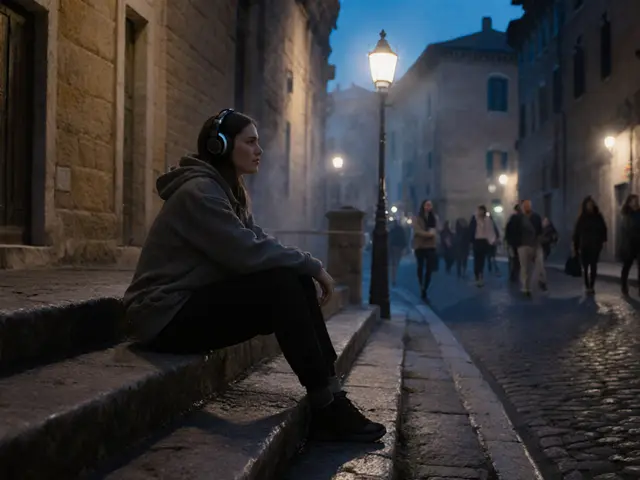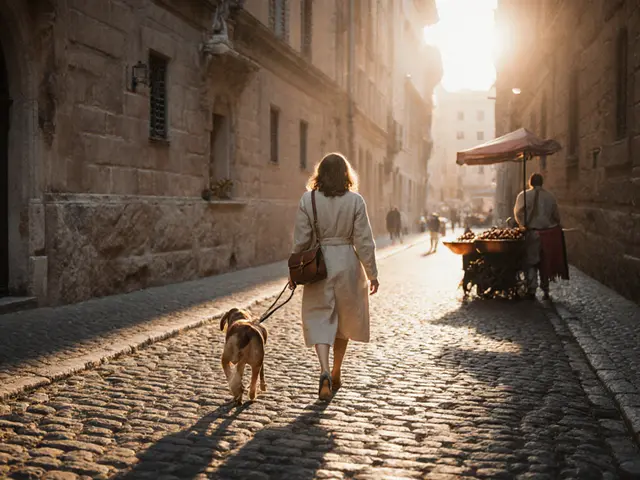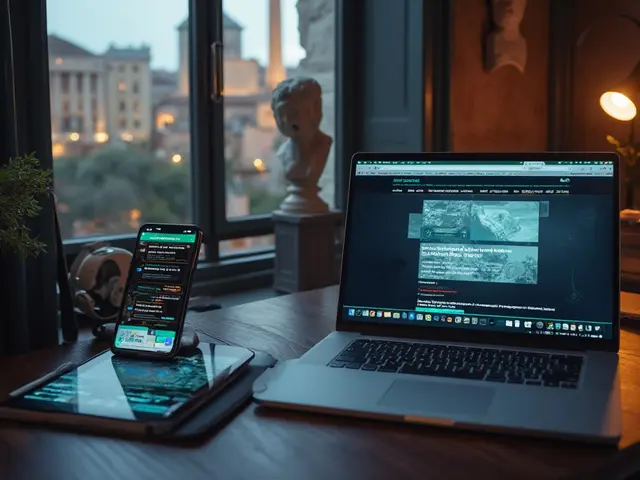Forget what you've heard about movie magic. The real magic happens when everything almost falls apart, and somehow, it all pulls together. That's exactly what happened with Tory Lane in Rome. Shooting in a city that's barely predictable made every day an adventure—sometimes more than we wanted.
If you're dreaming of making a film in an iconic spot like Rome, here's what matters: local knowledge is gold. Even the best script can fall flat if you don't lean into what the city actually gives you. We skipped tourist traps and went for real neighborhoods where life spills into the streets. That gave Tory Lane a pulse you just can't fake in a studio.
- Why Rome Was the Right Choice
- Scouting the Perfect Locations
- Working with Local Talent and Crew
- On-Set Surprises and Lessons Learned
Why Rome Was the Right Choice
Picking Rome for the shooting of Tory Lane wasn’t about postcard shots or just wanting an Italian vacation. The city has stories in every cobblestone and graffiti-marked wall, and that was exactly what the script needed. Rome offers a mix of old world and gritty edge—no other city can serve modern urban drama one minute and then toss you into a maze of ancient ruins the next.
The city’s wild mix of neighborhoods, like bustling Trastevere and funky Pigneto, gave us backdrops you’d never build on a set. The logistics weren’t always easy, though. Rome is known for its unpredictable traffic and sudden city strikes, which made each day a fresh challenge. But here’s the thing: all that chaos brought a natural energy that made the acting and storytelling even more real. Location manager Francesca Gallo shared,
“Rome gives you texture—noise, movement, locals who don’t care there’s a camera. That’s never replicable in a backlot.”
We did our homework before rolling in. According to Cinecittà Studios, more than 300 international productions use Rome as a base every year. Here’s how the city stacks up for film shoots:
| Factor | Rome | Average EU City |
|---|---|---|
| Permit Waiting Time | Up to 3 weeks | 1-5 weeks |
| Local Talent Pool | High | Varies |
| Weather Consistency | 60% sunny days/yr | 40-65% |
| Production Costs | Moderate | Low-High |
Probably the biggest tip for anyone eyeing Rome: get a local fixer on your side before you step foot on set. They’ll steer you past most red tape and find locations even Google Maps misses. Plus, Italy offers special tax credits for productions that spend money locally—something producers love almost as much as a good craft coffee on set.
Scouting the Perfect Locations
You can’t just land in Rome and pick a spot hoping the magic will happen. It takes a lot of walking, local tips, and more than a few coffees to really see the heart of a place. For Tory Lane, we ignored the postcard spots like the Trevi Fountain and Colosseum. Those places are packed, noisy, and honestly, they’ve popped up in a million movies before.
Instead, we went off the beaten track. We shot scenes in Garbatella, a neighborhood that still feels like a real slice of Roman life. Its wide staircases and faded orange buildings gave us texture you just can't fake. Testaccio was another goldmine, especially for its graffitied alleyways and old-school markets—nobody blinked when our crew took over a piazza at sunrise, which says a lot about local patience.
Here’s what we looked for while scouting:
- Lighting: Natural light in Rome is harsh, especially midday. We mapped out streets that got the best golden glow between 7-9 a.m.
- Noise: Traffic and mopeds are everywhere. We used a handheld decibel meter app to find spots under 60 dB—otherwise, sound was a nightmare.
- Permissions: If you’ve heard Italian bureaucracy is slow, double it. Getting the go-ahead meant at least three weeks’ advance notice, plus a local fixer who knew whose palm to grease.
- Power Access: Some alleys were great but had nowhere to plug in gear. We ended up renting portable batteries for tricky exteriors.
Just to give you an idea, here’s a quick data snapshot from our biggest shoot days:
| Neighborhood | Shoot Hours | Avg. Crew Size | Permit Wait (days) |
|---|---|---|---|
| Garbatella | 6 | 18 | 17 |
| Testaccio | 7 | 15 | 21 |
| Trastevere | 8 | 21 | 12 |
Biggest tip? Go local. Our guide, Marco, knew almost every landlord and bartender in Garbatella and saved us from wasting weeks on paperwork and dead ends. He even snagged us a rooftop for a key scene just by chatting up his cousin. Rome will test your patience, but if you play nice with the locals, you get access nobody else does.
Working with Local Talent and Crew
Shooting Tory Lane in Rome throws you right into the deep end of local film culture, for better or worse. Even though Rome has hosted everything from classic Fellini movies to big Hollywood shoots like Angels & Demons, daily work with Italian crews has its own rhythm and rules. For starters, the usual 9-to-5 is more like 10-to-whenever. Lunch isn’t just food, but a borderline religious event. Expect the crew to disappear for a long, sit-down meal as soon as the clock hits 1 pm.
What’s cool is the passion and expertise Italian crews bring to the table, especially when it comes to lighting and set dressing. They’ve got a knack for making cramped, chaotic spaces look cinematic with basics – often using whatever’s handy instead of renting pricey gear. We found that flexibility saved both time and budget.
If you’re picking talent, double-check availability and ask for recommendations in person whenever possible. Many Rome-based actors and crew don’t update their online profiles. The grapevine works better.
- Always have a bilingual liaison on set – English isn’t always second nature, even for experienced techs.
- Pay in cash whenever you can (that’s just how things work for many folks, especially freelancers).
- Lock down permits early, but have backup locations since the city’s notorious for double-booking.
- Understand that union rules differ – overtime costs add up fast after eight hours, and there’s no wiggle room.
Just to give you an idea of how local production shapes up, here’s a sample breakdown from our Rome shoot:
| Role | Local Hire Rate (EUR/day) | Notes |
|---|---|---|
| Camera Operator | 320 | Often brings personal kit |
| Set Dresser | 220 | Flexible with odd materials |
| Line Producer | 400 | Handles local permits |
| Lighting Tech | 250 | Known for quick solutions |
Working with Romans is never dull. The best advice? Let them do things their way but check in often, and say thank you with real espresso—you’ll get twice the effort, every time.
On-Set Surprises and Lessons Learned
Shooting Tory Lane in Rome brought curveballs almost every day. Some were funny. Some made you want to pull your hair out. If you’re planning your own film in a foreign city, you’ll want to know what to expect—and how to handle it.
Here’s a big fact: we lost almost 30% of planned shooting hours in the first week to Rome’s legendary traffic jams and street closures. You’ll think you have a plan, but the city often has other ideas. Crew members on mopeds sometimes arrived faster than those in vans. Locals call these ‘Roman bonuses’—random delays that just come with the territory.
One lesson that saved us: always have a backup indoor shoot option. On day three, a sudden city-wide taxi strike left half our team stranded. Instead of waiting it out, we shifted to a nearby apartment location and kept rolling. Flexible planning makes a difference.
- Permits here are real paperwork marathons. Always double check requirements—officials sometimes changed rules on a whim, especially near tourist hotspots.
- Noise is everywhere—church bells, vespas, and street vendors. Wearing wireless mics with good wind protection was a lifesaver.
- Locals are helpful, but everything works in ‘Italian time.’ Build extra time into every setup.
If you rely on equipment from home, don’t. On one shoot, our rented LED panels blew a fuse because of an unexpected power surge. Renting locally is often safer. See the table below for some quick comparisons from our experience:
| Resource | Local | Imported |
|---|---|---|
| Lighting Gear | Fewer voltage issues, fast repairs | Adapters needed, possible damage |
| Sound Crew | Knows local noise patterns, speaks Italian | Language barriers, slower setups |
| Transportation | Knows shortcuts, flexible schedules | Higher cost, risk of delays |
The vibe on set kept us on our toes, but also taught us to work with—rather than against—the city. If something goes sideways, it helps to laugh and just move forward. It’s not just about making a movie, but learning to adapt on the fly. That’s when you get stories you’ll actually want to tell later.








